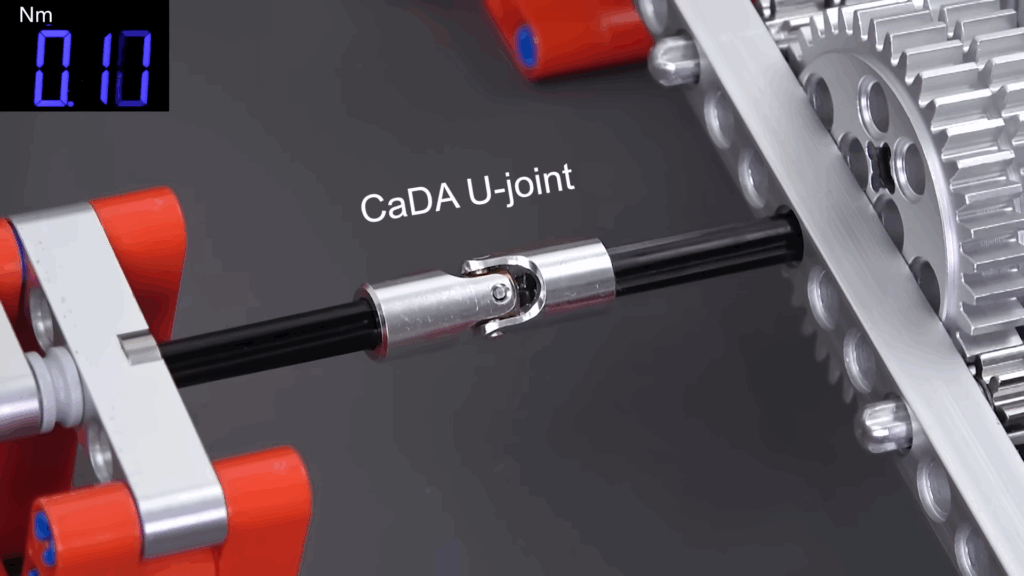Lego’s Technic line, renowned for its intricate mechanical devices, has long been a favorite among enthusiasts. From cogs to gears, chains, and even pneumatic components, the Technic series offers a playground for creativity. However, most of these components are crafted from plastic, limiting their durability and performance. In the vibrant world of Lego YouTube, builders often push these parts to their limits, leading to frequent breakages.
In response to this challenge, the Brick Experiment Channel has embarked on a quest to identify more robust Lego-compatible universal joints from third-party manufacturers. Their findings reveal a range of alternatives that significantly outperform the original Lego parts.
Testing the Limits of Lego’s Universal Joints
The investigation begins with a simple demonstration: a Lego universal joint succumbs to just 0.4 Nm of torque. This vulnerability is attributed to its reliance on tiny plastic pins in snap-fit joints. This inherent weakness has prompted builders to seek out stronger alternatives.
The video highlights several third-party options, such as the CaDA universal joint, which utilizes aluminum sleeves, a copper center, and steel pins. This construction is so robust that the plastic Lego axles fail before the joint itself. When tested with third-party aluminum axles, the CaDA joint withstands up to 2.3 Nm of torque before the aluminum sleeve snaps. An all-steel joint from MTP pushes the boundaries even further, withstanding up to 4 Nm of torque before its axle mount strips out.
The Rise of Third-Party Innovations
This exploration into stronger components underscores a growing trend: the expansion of a de facto standard kit for mechanical experimentation. While purists may argue that swapping out universal joints and axles for aluminum and steel parts deviates from traditional Lego play, it also opens new avenues for creativity and innovation.
According to experts, this shift mirrors historical trends in other hobbyist communities. For instance, the rise of third-party parts in the model train industry allowed enthusiasts to create more realistic and durable models. Similarly, the radio-controlled car community has long embraced aftermarket parts to enhance performance and durability.
Expert Opinions on the Evolution of Lego Play
Dr. Emily Carter, a mechanical engineer and Lego enthusiast, notes that the availability of stronger components is a natural evolution. “As builders push the boundaries of what’s possible with Lego, it’s only logical that they seek out components that can withstand greater stress. This not only enhances the play experience but also encourages engineering creativity,” she explains.
“As builders push the boundaries of what’s possible with Lego, it’s only logical that they seek out components that can withstand greater stress.” — Dr. Emily Carter, Mechanical Engineer
Implications for the Future of Lego Building
The introduction of more durable Lego-compatible components could have significant implications for the future of Lego building. It may inspire a new generation of builders to explore complex mechanical designs that were previously unattainable with standard Lego parts.
Furthermore, the growing market for third-party components could lead to increased collaboration between Lego and these manufacturers, potentially resulting in official partnerships or even new product lines that incorporate these innovations.
As the video from the Brick Experiment Channel demonstrates, the world of Lego is evolving. While traditionalists may lament the departure from classic Lego play, the possibilities offered by stronger components are undeniably exciting. This development represents a fascinating intersection of creativity, engineering, and innovation, promising to reshape the landscape of Lego building for years to come.
Meanwhile, as enthusiasts continue to test the limits of what’s possible, the boundary between toy and tool blurs, offering endless opportunities for imaginative exploration. The journey of Lego Technic and its compatible parts is far from over, and the future looks bright for those willing to build beyond the basics.
